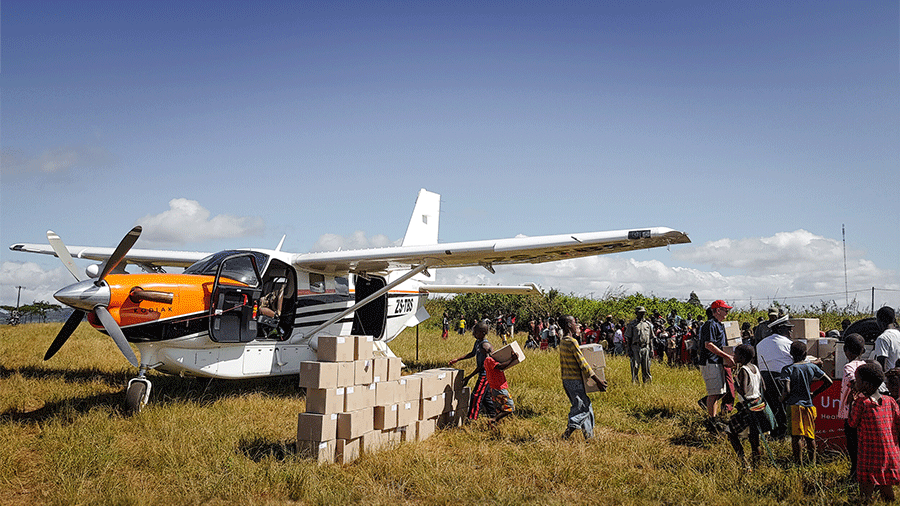
South Africa
Global Humanitarian Network Partner:
Mercy Air South Africa
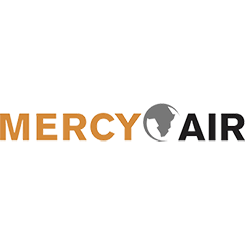
Wings of Hope has partnered with Mercy Air South Africa (MASA), a nonprofit organization based in South Africa. MASA provides aviation services to over 40,000 people annually in collaboration with various humanitarian and mission organizations across southern Africa. Their aviation services include disaster relief, medical, dental, agricultural and educational services for remote villages in several countries. One of the unique features of MASA is its ability to fly both fixed and rotary-wing aircraft, which sets it apart in the realm of disaster relief efforts.
Wings of Hope plays a crucial role in providing financial support to MASA’s initiatives, which enables the organization to extend its reach and provide essential services to those in need. The partnership between Wings of Hope and MASA is a testament to their shared commitment to making a positive impact on the lives of people in southern Africa. By working together, these organizations can provide lifesaving services to people in remote and underserved areas, bringing hope and healing to those who need it most.
Republic of South Africa
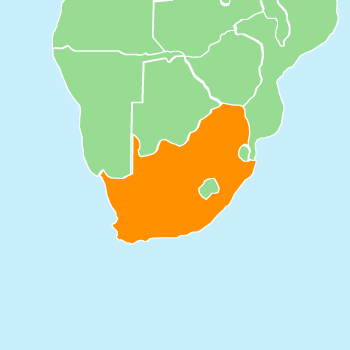
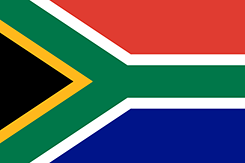
Capital: Cape Town, Pretoria, Bloemfontein
Currency: Rand
Language: Afrikaans, English, Xhosa, Zulu, Southern Sotho, Tswana, Northern Sotho, Tsonga, Venda, Swati, Ndebele
Landmark: Table Mountain, Robben Island, Muizenberg’s beach huts, Cape Dutch homesteads of the Winelands
Geography:
South Africa is located at the southern tip of the African continent. It is bordered by Namibia to the northwest, Botswana and Zimbabwe to the north, and Mozambique to the northeast. To the east, it is bounded by Eswatini (formerly Swaziland) and South Africa’s independent kingdom of Lesotho, which is entirely surrounded by South African territory.
To the west and south of South Africa lies the South Atlantic Ocean, while to the southeast is the Indian Ocean. The meeting point of these two oceans, known as the Cape of Good Hope, is a prominent geographical feature and historically significant maritime landmark. South Africa’s extensive coastline stretches for over 2,500 kilometers (1,550 miles) along these two oceans, providing access to important shipping routes.
South Africa’s earliest inhabitants were the San and Khoikhoi people, who were hunter-gatherers, and later Bantu-speaking groups migrated from central Africa. In the 17th century, the Dutch arrived and established the Cape Colony as a stopover for their ships. The British took over from the late 18th century until the early 20th century. The discovery of diamonds and gold in the 19th century brought an influx of European settlers and led to the forced displacement of the indigenous people. This marked the beginning of apartheid, a system of institutionalized racial segregation and discrimination against non-white South Africans that was enforced through laws restricting their rights, movement and living conditions. The anti-apartheid movement led by Nelson Mandela gained momentum in the 1980s and ultimately led to the end of apartheid and the election of Mandela as South Africa’s first black president in 1994. Since then, South Africa has made progress in addressing the legacy of apartheid, but it still faces challenges such as poverty and inequality.
MASA provides essential air transport services and disaster relief efforts in Southern Africa. The organization’s efforts are critical, given the significant health challenges presented in the countries predominantly served by MASA: South Africa, Mozambique, Lesotho and Eswatini. The organization’s focus on disaster preparedness emphasizes the importance of health care infrastructure and capacity-building to ensure that affected communities receive essential and timely care. For these reasons, MASA is facilitating the delivery of medical supplies and personnel to affected areas. Despite efforts to address health care and access to essential resources, more investment and support are needed. MASA’s support for disaster relief highlights the importance of integrating health into preparedness efforts and investing in health care infrastructure and capacity-building. These efforts are crucial to strengthening health care systems and ensuring that affected communities receive the care they need in the aftermath of a disaster.
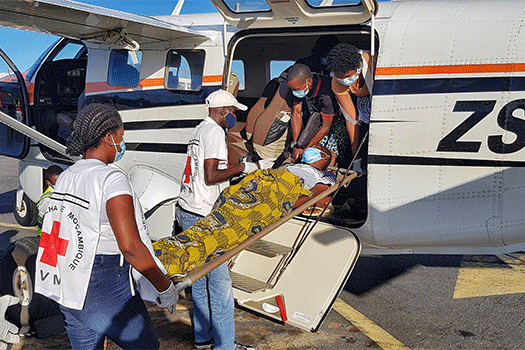
(Per Capita)
South Africa
Mozambique
Eswatini
Worldwide
Disease (by percentage %)
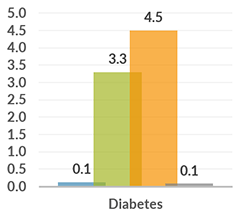
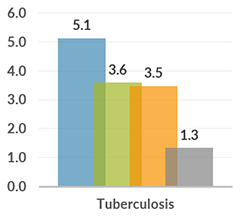
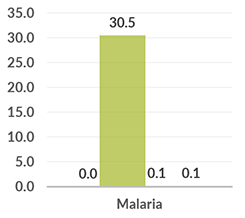
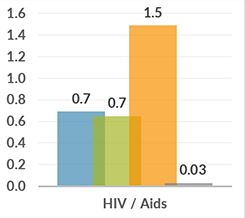
The number of people suffering from diabetes refers only to inhabitants aged between 20 and 79 years.
Child Vaccine (by percentage %)
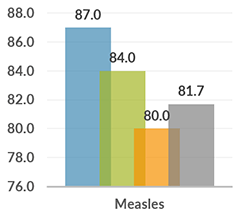
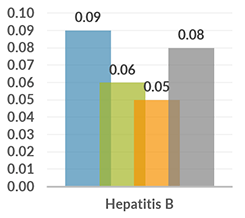
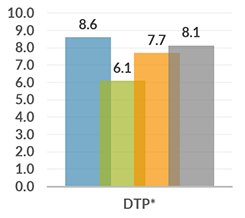
A Journey from Darkness to Light: The Story of Mr. W
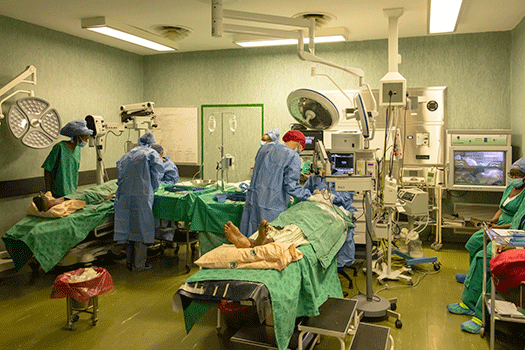
Mr. W, a 65-year-old man, once lived a self-sufficient life through his vegetable garden and the animals he kept. However, dense cataracts in both eyes left him blind and he remained on a seemingly endless waiting list for eye surgery. His loss of vision resulted in him losing everything and experiencing homelessness for a year.
Fortunately, a good Samaritan came to his aid and provided him with shelter, food and clothing. Mr. W was then brought to the hospital where Mercy Air had flown in a surgery team. The surgery was a success; the milky cataracts were replaced with clear implants.
The day after the surgery the eye patch was removed, and thankfulness lit up Mr. W’s face. With his newfound sight, he immediately sprang into action and led another blind woman to the same hospital to find her sight.
This story showcases the impact of Mercy Air’s partnership with Medical Mission Eswatini and Flying for Life who fly ophthalmology teams to remote clinics to perform eye cataract surgeries. These efforts are making a real difference in the lives of those who were once blind, providing them with hope and a future.
South Africa’s earliest inhabitants were the San and Khoikhoi people, who were hunter-gatherers, and later Bantu-speaking groups migrated from central Africa. In the 17th century, the Dutch arrived and established the Cape Colony as a stopover for their ships. The British took over from the late 18th century until the early 20th century. The discovery of diamonds and gold in the 19th century brought an influx of European settlers and led to the forced displacement of the indigenous people. This marked the beginning of apartheid, a system of institutionalized racial segregation and discrimination against non-white South Africans that was enforced through laws restricting their rights, movement and living conditions. The anti-apartheid movement led by Nelson Mandela gained momentum in the 1980s and ultimately led to the end of apartheid and the election of Mandela as South Africa’s first black president in 1994. Since then, South Africa has made progress in addressing the legacy of apartheid, but it still faces challenges such as poverty and inequality.
MASA provides essential air transport services and disaster relief efforts in Southern Africa. The organization’s efforts are critical, given the significant health challenges presented in the countries predominantly served by MASA: South Africa, Mozambique, Lesotho and Eswatini. The organization’s focus on disaster preparedness emphasizes the importance of health care infrastructure and capacity-building to ensure that affected communities receive essential and timely care. For these reasons, MASA is facilitating the delivery of medical supplies and personnel to affected areas. Despite efforts to address health care and access to essential resources, more investment and support are needed. MASA’s support for disaster relief highlights the importance of integrating health into preparedness efforts and investing in health care infrastructure and capacity-building. These efforts are crucial to strengthening health care systems and ensuring that affected communities receive the care they need in the aftermath of a disaster.

(Per Capita)
South Africa
Mozambique
Eswatini
Worldwide
Disease (by percentage %)




The number of people suffering from diabetes refers only to inhabitants aged between 20 and 79 years.
Child Vaccine (by percentage %)



A Journey from Darkness to Light: The Story of Mr. W

Mr. W, a 65-year-old man, once lived a self-sufficient life through his vegetable garden and the animals he kept. However, dense cataracts in both eyes left him blind and he remained on a seemingly endless waiting list for eye surgery. His loss of vision resulted in him losing everything and experiencing homelessness for a year.
Fortunately, a good Samaritan came to his aid and provided him with shelter, food and clothing. Mr. W was then brought to the hospital where Mercy Air had flown in a surgery team. The surgery was a success; the milky cataracts were replaced with clear implants.
The day after the surgery the eye patch was removed, and thankfulness lit up Mr. W’s face. With his newfound sight, he immediately sprang into action and led another blind woman to the same hospital to find her sight.
This story showcases the impact of Mercy Air’s partnership with Medical Mission Eswatini and Flying for Life who fly ophthalmology teams to remote clinics to perform eye cataract surgeries. These efforts are making a real difference in the lives of those who were once blind, providing them with hope and a future.
Mercy Air's Lifesaving Mission
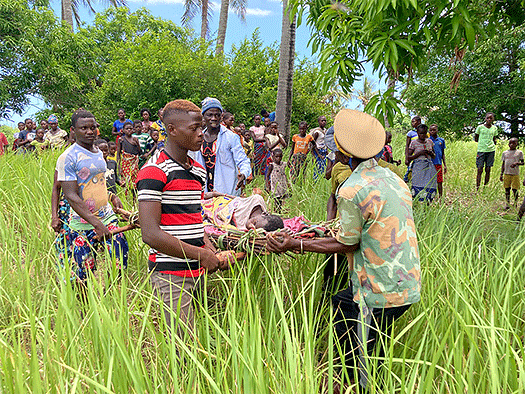
Mercy Air South Africa is a nonprofit organization dedicated to medical and humanitarian assistance to communities in need throughout Southern Africa. With a fleet of helicopters and skilled medical personnel, they deliver critical care to those who need it most in hard-to-reach locations.






